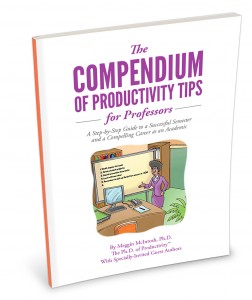Teleconferencing as a Strategy by Meggin McIntosh, PhD
 I am a huge fan of teleseminars – both as a learner and as a teacher. Throughout the year, I participate and host these high tech (but low tech) ways of learning and teaching.
I am a huge fan of teleseminars – both as a learner and as a teacher. Throughout the year, I participate and host these high tech (but low tech) ways of learning and teaching.
If you have not been integrating one or more aspects of telelearning/telecommunications as part of your strategy as an academic, then I would like to encourage you to do so. Implementing these ten tips will support your intention to connect with students, colleagues, or others in the broader community.
- Interview key people in your field. Others will be interested in learning from these experts and the people you choose to interview will be honored by your request to feature them. Teleconferencing involves nothing more than a telephone so no one has to travel. And, because you can record the interview, it can be done at at anytime that is convenient and played back whenever others are ready to listen and learn.
- Have focus groups or discussion groups with various students or other “target” entities. This is a great means to learn more from others – and no one has to travel. By doing focus groups – virtually – you and everyone else is learning.
- Teach something that the community needs (and that will help show them your value). The teleseminar can be as short as 10 minutes or as long as a weekly series that lasts for years. It’s up to you. Regardless of whether you are at a land-grant institution or a private college, you always want to share your knowledge and demonstrate your value to the broader community in which you live.
- Offer classes that others will pay for. You may be able to set up a special account or fund that will help pay for a scholarship, help fund your research, or bring money in to supplement conference travel funds. Your knowledge is worth something to others. Figure out what people most need and want – and offer teleseminars that provide that information. People will gladly pay and you will have additional revenue and a deepened connection with others.
- Ask students who they would like to interview (undergrad or grad students). Even give one of them the task of contacting the person to be interviewed. Let students generate the questions to be asked and be prepared for the interview and bring this special guest “to” your classroom via teleconferencing. This is a magnificent way to be seen as connector and to energize students about your discipline and its applications in various other fields.
- Hold “office hours” where students or people in the community can call in and you’ll be available to answer questions, provide information, or otherwise demonstrate your value. I have named these call-in times by a number of different labels (e.g., “The Doctor Is In”). Choose a name that fits you and your discipline and style. Just get the bridgeline, let people know the number and be there for when they contact you. These are a blast.
- Do follow-ups for new content you have taught. Depending on what you teach, your students may need additional follow-up to make sure that they gain clarity and mastery of what you have been teaching. You can offer teleseminars like this on a regular basis and either extend their learning or offer Q & A time for those who call in.
- Create learning segments for people to access through your website or via email messages. You can teach and record segments of any length, which you then post on your website for visitors to access, post on a password-protected website, or send out via email to students, other researchers, and colleagues worldwide.
- Share best practices. Gosh, can everyone use more best practices? YES! And if you are seen as an leader in your field and resource about best practices, then this strengthens your relationship with your students and the community. Consider sharing best practices related to your work that you have researched and/or you can have associates share their best practices. Now, to get going, there are a couple of suggestions, I would make, including
- Set up a bridgeline using one of the many free bridgeline services (I use www.allfreeconference.com) and setting up an account with a service that records audio, e.g., http://www.HowtoRecordAudio.com
 And as a college or university faculty member, you have many opportunities for success and failure. If you would like additional tips, tools, and techniques that you can use to support your successes, then you will want to access the The Compendium of Productivity Tips for Professors a step by step guide that will help you have a successful year and a compelling career as an academic.
And as a college or university faculty member, you have many opportunities for success and failure. If you would like additional tips, tools, and techniques that you can use to support your successes, then you will want to access the The Compendium of Productivity Tips for Professors a step by step guide that will help you have a successful year and a compelling career as an academic.





